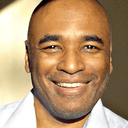How to tackle our fears of not being good enough
)
Posted: Wed 23rd Apr 2025
8 min read
Fear keeps us feeling small.
It lies behind the cautious voice we hear before we act, which says: "Are you sure you can do this?"
That voice ties us to the old ways of thinking and acting that feel comfortable.
We aren’t procrastinating, we are paralysed
When that voice drowns out our courageous instincts, we don’t pursue goals which make us uncomfortable. We see the risks we face as huge and uncontrollable, while our power to manage risks and create fresh opportunities is weak and small.
So, how do we start changing the way we think so that spending time, effort and money begins to make sense?
Changing the way we think
How do we visualise ourselves taking action to produce attractive outcomes which engage our customers (while we enjoy the satisfaction of using our skills fully and boosting our sense of wellbeing)?
The inner critic
First, we need to recognise the power of our inner critic. The critic speaks with a fear-filled voice to which we pay attention. It says: “Who are you to offer your creation, innovation or talents to the world?"
Changing the self-belief behind that voice is key. Of course, you are good enough to better yourself and to serve others! You might just need some support to start and keep going.
Coaching can help
Coaching can provide that encouragement.
Unsurprisingly, fear often comes up in coaching conversations. This is true even when coaching clients are initially confident that they want to change their situation.
It is one thing to visualise the end goal, for instance, creating a successful wellbeing business after working in a corporate world. But it is another thing to handle the fear involved in leaving a nine-to-five job behind to build that business.
Finding out where that fear comes from, and who that fearful voice sounds like helps tame the inner critic and reduce that fear.
Case study Alice
My coaching client, Alice, wanted to move toward her goal of operating her own wellbeing centre, building on her side-hustle skills in that area and her experience of delivering results in her corporate career.
The challenge for her was getting past the fear of failure, which came up when she became serious about her new path. Working with Alice, it was important to be clear what failure and success meant at each stage of her journey.
Alice was raised to be a ‘good girl’, to think of others first and not be too adventurous in pursuing her vision of the future. No surprise then that she felt apprehension about taking the first steps towards her goal, while she kept working her nine-to-five job.
Alice and I identified the practical steps that she would take to control the risks she was taking as she started to top up her entrepreneurial skills; scale her one-to-one work to one-to-many; build word-of-mouth relationships with the type of clients she wanted to serve; and find out what added value they would want from their ideal wellbeing location.
Alice’s big goal became a series of smaller, manageable steps. The fear Alice felt diminished, and her vision became less fear-filled.
Of course, with more time, coaching can go deeper and find out about the origin of our fear – who does our critic sound like, when did our fear start showing up – how do factors such as gender, age, ethnicity, family situation shape our experience of fear.
If recognising our inner critic comes first, being aware of what triggers our fear response comes next. It can help us as we serve others and change ourselves.
How does that awareness work?
Well, when that fear filled voice starts speaking to us, we can put it into context. The voice doesn’t make us pack up and go home, whatever obstacles we face. Instead, we put it into context, it belongs to a worried family member, or sceptical friend, or jealous co-worker.
It is the trigger for us to plan how we will manage the risks we are taking on.
Third is the recognition of the dark places our fear can sometimes take us to. As when fear connects us to feelings which we don’t like to acknowledge.
Case study Bill
My coachee, Bill, identified a way to manage his fear after recognising what it meant for the anger he was carrying around. Bill's fear involved seeing reality after knowing, liking and trusting his boss.
Bill's boss had promised that his customer service role would quickly become a stepping stone to the technical job he was well qualified for. He had been fobbed off with that promise for 18 months by the boss at the small start-up where he worked.
Bill placed a high value in honesty in his relationships. Bill’s partner was concerned about the change in his happiness outside work which she could see was spoiling their time together.
Bill was fearful that he would bring his wider feelings with him, becoming angry and emotional when he told his boss he was developing his career elsewhere after being misled.
My work with Bill identified a practical plan, with milestones, which allowed him to list his marketable skills; name any gaps which he could fill to improve the range of roles he could apply for; manage his feelings assertively so his anger was controlled; and keep the eventual work-related conversation professional when he sat down with his boss.
Breaking down Bill’s fear into manageable pieces allowed him to acknowledge the complex and powerful feelings within his chest; while creating a structured script he could use to professionally discuss his personal development journey.
The examples above begin to show how fear is a complicated part of our lives.
Alice and Bill both welcomed the chance to speak about their fears and understand how those feelings reflected their personalities. That understanding of their fear became a powerful tool to add to their set of skills.
Crucially, that understanding forms a blank page on which we can outline our creative solutions and innovative approaches to the journey towards our goal. It is an important piece of the foundations we use to grow, while we keep on building those all-important trust-filled relationships with the people we can truly serve.
Relevant resources
Get business support right to your inbox
Subscribe to our newsletter to receive business tips, learn about new funding programmes, join upcoming events, take e-learning courses, and more.
Start your business journey today
Take the first step to successfully starting and growing your business.
Join for free
